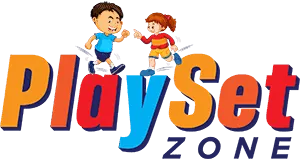How often should playground equipment be inspected?
Playground equipment should be inspected at least weekly, monthly, quarterly or every 6 months with routine inspections performed more often and in-depth safety inspections being performed on a regular schedule, based on usage and location.
Playgrounds are designed to be fun and safe for children. They are meant to be a place where children can play and develop motor skills, as well as socialize with their peers. A good playground is designed to be sturdy and withstand the abuse from children. But, just like anything, playgrounds do wear down over time. How often should playground equipment be inspected?
There are 2 main types of inspections – safety and routine inspections. Safety inspections usually mean a qualified expert going through a checklist meant to discover wear and tear issues or mechanical issues caused by rough weather, misuse, vandalism, etc.
Playground Safety Inspections
As a commercial playground reviewer, we are often asked about how often playground equipment should be inspected. The answer is not as straightforward as you might think. There are many factors to consider when answering this question, including the location of the equipment, the use of the equipment, and the age range the playground is built for. There are several items to check on regular basis that will help ensure the equipment is safe. These should be done once every couple of months, depending on use, season and location. During this type of inspection, if any defective parts are discovered, there are few steps that can be taken:
- repair or replace on the spot, if possible, such as replacing a swingset chain or tightening loose bolts
- plan a future repair visit if wear and tear is discovered that does not affect the safe operation of the playground e.g a basketball net that needs to be replaced
- cordon off the affected feature or put the whole playground out of service if the issues do affect its safe operation
Playground Routine Inspections
Routine inspections are done to discover littering or debris issues, such as garbage or even broken glass, playground sand or mulch that needs to be changed, issues caused by weather, vandalism, sanitation issues, etc
Upon finding such issues, some of them can also be corrected on the spot, or the entity that manages the playground, such as the school can be contacted to correct the issues.
How To Inspect Backyard Playgrounds
If you are a parent, you know that playground equipment needs to be safe. It is not only your child’s safety that is on the line, but your own peace of mind. Parents with toddlers or school-age children know that playgrounds can be among the riskiest areas for children. However, just because it is playtime, doesn’t mean that you can’t check to make sure that the playground equipment is safe. Dangers can be lurking even in playgrounds considered to be safe and well-maintained.
Even if you do not have access to a qualified inspectors, you should still inspect your playset periodically. Look out for issues such as:
- cracks in the frames
- loose bolts
- loose chain links
- cracked or loose bars
- rust
- splintering wood
- soiled playground sand or mulch
- general sturdiness
- hot surfaces on sunny days
- worn surfaces that might become slippery
- sinking or leaning structures where the ground is too soft
- structures or features that touch or are too close to each other
- trees or branches growing too close to the playground
If you do suspect that there is an issue and you think you cannot fix it, it is always best to get the help of a qualified contractor. You should make a note each time you inspect the playground and plan the next inspection so you do not forget about it.





Trackbacks/Pingbacks